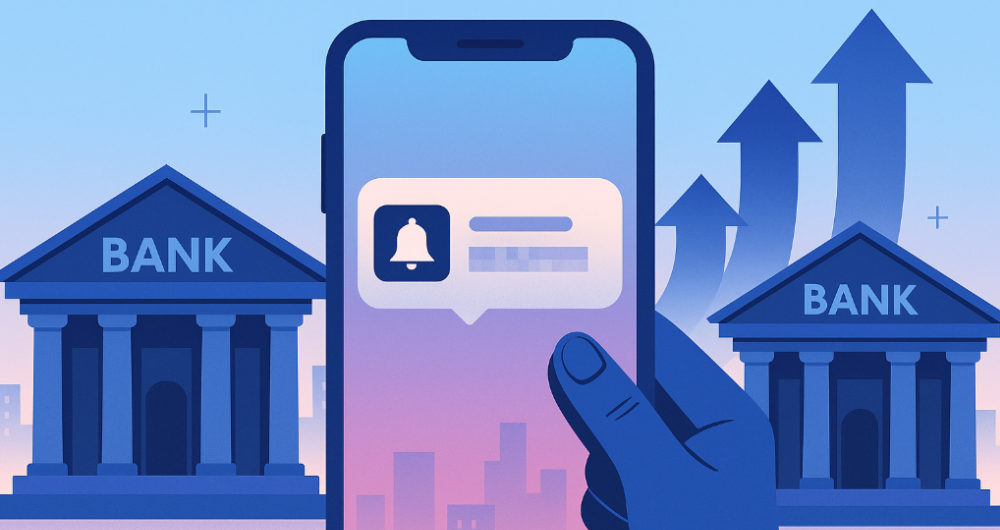
The landscape of mobile banking has witnessed profound changes, particularly in recent years. Statistics from 2021 onwards indicate a robust growth in mobile banking usage among consumers in North America. This uptick is not merely in terms of frequency of use but also in the diversity of transactions and interactions. From checking account balances to executing complex investment strategies, users are increasingly relying on their mobile devices for a broad range of financial activities.
This trend underscores the importance of personalized and efficient mobile banking experiences. Latinia‘s products, for instance, offer banks the opportunity to deliver personalized financial insights and recommendations directly to users’ smartphones. This not only enhances customer satisfaction but also fosters a deeper sense of loyalty and trust between the bank and its customers.
Furthermore, the integration of technologies such as enhanced security protocols in mobile banking apps has boosted user confidence, allowing for more secure and transparent transactions. Banks are now more than ever focused on providing a seamless and secure user experience, acknowledging that the ease of use and trust are key factors in customer retention and satisfaction.

Six Strategies for Effective Push Notifications
1. Transaction Notifications: Banks utilize transaction notifications to promptly update customers about account activities like deposits, withdrawals, and transfers, offering a transparent view of their financial status. This immediate communication not only enhances customer trust but also helps in financial management. A key example is when banks send instant alerts for large transactions, which helps customers to quickly spot any unauthorized activity.
2. Security and Fraud Alerts: These notifications are crucial for real-time warnings about unusual account activities, playing a significant role in fraud prevention and enhancing customer trust. They act as a first line of defense against potential security breaches, informing customers immediately when suspicious activities, like unfamiliar logins or transactions, are detected.
3. Significant Account Alterations: Notifications about important changes in accounts, such as modifications in terms and conditions, fee structures, or interest rates, maintain transparency in the banker-customer relationship. By keeping customers informed about these changes, banks demonstrate their commitment to open communication, which is fundamental to customer trust and satisfaction.
4. Direct Banking Communication: This involves sending personalized messages regarding account services, scheduled appointments, or reminders, fostering a more personalized relationship between the bank and its customers. These notifications can range from reminders about due payments to updates about new banking services or changes in branch hours, enhancing the overall customer experience by making it more responsive and tailored.
5. Investment Tracking and Updates: For customers engaged in investments, timely updates about market trends, portfolio performance, and new investment opportunities are invaluable. These notifications provide critical insights, enabling customers to make informed decisions regarding their investments, like when to buy or sell stocks, or how to diversify their investment portfolios.
6. Cross-Selling and Up-Selling Banking Products: Push notifications are also instrumental in cross-selling and up-selling banking products. This strategy involves notifying customers about products and services that align with their banking behavior and needs. For instance, a customer with a history of high savings account balances could receive notifications about high-yield savings options or investment opportunities, effectively utilizing insights to tailor offerings. Latinia’s Next Best Action (NBA) plays a pivotal role here. By leveraging data analytics and customer behavior insights, Latinia’s NBA approach aids banks in identifying and communicating the most appropriate additional products or services to their customers at the right time, thereby enhancing customer experience and increasing the bank’s revenue potential.

Customizable Notifications in Mobile Banking
The ability to customize notifications in mobile banking apps has significant benefits for both banks and customers. By allowing customers to choose which notifications they receive, banks can ensure that communication is relevant, useful, and engaging for each individual. This tailored approach can enhance user experience, increase app engagement, and potentially grow revenue for banks.
- Increased Engagement and User Satisfaction: Customizable notifications ensure that users receive alerts that are specifically relevant to them, which can lead to higher engagement rates. For example, customers may choose to receive alerts for low account balances, deposits, or large transactions. This relevance increases the likelihood that customers will interact with the notifications and, by extension, the app itself.
- Improved Financial Management for Customers: Customizable notifications can act as a proactive personal financial management (PFM) tool. By receiving alerts tailored to their specific needs and financial activities, customers can better manage their finances. For instance, receiving notifications for upcoming bills or large expenses helps customers plan and adjust their budgets accordingly.
- Enhanced Security: Customized alerts for suspicious activities or unauthorized transactions allow customers to respond quickly to potential security threats. This rapid response can help prevent financial losses and enhance the overall security of customer accounts.
- Increased Revenue Opportunities for Banks: By offering customers the option to receive promotional notifications, banks can effectively advertise new products or services. For example, a bank might send notifications about a new high-interest savings account to customers who frequently have high balances in their checking accounts. This targeted approach can lead to increased uptake of new services and products, thereby growing the bank’s revenue.
- Customer Retention and Loyalty: Banks that provide a customizable and user-friendly notification system are more likely to retain customers and foster loyalty. When customers feel that their specific needs are being met, they are more likely to continue using the bank’s services and recommend them to others.
- Regulatory Compliance: Customizing notifications also means that banks can ensure compliance with various data privacy regulations. By allowing customers to choose what information they receive and how they receive it, banks demonstrate a commitment to respecting customer privacy and regulatory requirements.
To explore how Latinia’s advanced notification software can elevate your bank’s customer experience, streamline financial management, enhance security measures, and foster revenue growth, we invite you to schedule a consultation with one of our experts. Book your meeting here

